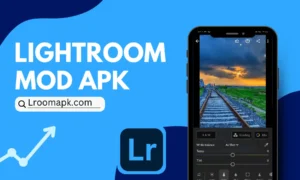In a world where everyone is a photographer, the right tools can make all the difference. Whether you’re just starting out or have years of experience, finding the best photography apps to enhance your images and streamline your workflow is essential. Join us as we take a closer look at some of the top apps that are revolutionizing the way amateur and professional photographers capture and edit their photos. From creative effects to powerful editing tools, these apps are sure to take your photography game to the next level.
Introduction to the world of photography apps
In today’s digital age, photography has become more accessible than ever. With just a click on our smartphones, we can capture beautiful images and moments that would have required expensive cameras and extensive knowledge in the past. And with the rise of social media platforms dedicated to showcasing visual content, the demand for high-quality photographs has never been greater.
But having access to a camera or a smartphone with a good camera is not enough to create stunning images. This is where photography apps come in – they offer a plethora of tools and features that help enhance and edit your photos in various ways. From amateurs looking to improve their skills to professional photographers wanting to add their unique touch, these apps are becoming an indispensable tool for all levels of photographers.
With thousands of photography apps available on both Android and iOS platforms, it can be overwhelming to determine which ones are worth your time and investment. To help you navigate through this vast world of photography apps, we have examined and tested some of the top-rated ones on the market.
We understand that each photographer has their own style, preferences, and requirements when it comes to editing their photos; therefore, we have curated a list containing diverse options so you can find what suits you best.
Whether you want simple filters or want full control over every aspect of your photograph – brightness, contrast, saturation – there’s an app for everyone!
Moreover, we will also discuss pricing plans as well as in-app purchases available on these applications so you can make an informed decision before investing your money. Whether free or paid applications – our review includes the cost and features of each app, so you can find a perfect fit for your budget and requirements.
Benefits of using photography apps for amateur and professional photographers
Photography apps have become an indispensable tool for both amateur and professional photographers. In this digital age, where almost everyone has a smartphone with a camera, these apps provide a convenient and efficient way to take, edit, and share photos. But beyond the basic functionalities, photography apps also offer numerous benefits that can enhance the experience of both amateur and professional photographers.
One of the most significant advantages of using photography apps is convenience. With traditional cameras, there is often a need to carry heavy equipment and accessories such as lenses, tripods, and flash units. On the other hand, photography apps allow you to capture high-quality images on your phone without having to lug around all those additional items. This makes it easier for photographers to be spontaneous and capture moments on-the-go.
Another benefit of using photography apps is their user-friendly interface. Even for beginners who are just starting in the world of photography, these apps offer easy-to-use features such as filters, editing tools, and preset modes that can help improve the quality of their photos. Additionally, many of these apps have tutorials or tips within them that can teach users how to take better photos or make use of advanced features.
For professional photographers who may have access to top-of-the-line equipment but still want more creative control over their images, photography apps offer customizable settings that give them greater flexibility in capturing unique shots. Many professionals also appreciate the ability to shoot in RAW format with some photography apps, allowing them to have more control over post-processing.
Post-processing is another significant advantage offered by photography apps. These applications have powerful editing tools that can transform ordinary photos into stunning masterpieces. From adjusting exposure levels and white balance to adding filters or creating collages – photo-editing capabilities within these apps save time by eliminating the need for additional software on desktop computers or laptops.
Types of photography apps (editing, filters, camera, etc.)
As the popularity of smartphone photography continues to rise, so does the demand for photography apps. These apps not only provide users with convenient tools for taking and enhancing photos, but also offer a creative outlet for aspiring photographers to experiment with different techniques and styles.
There are various types of photography apps available in the market, each serving a specific purpose. In this section, we will delve into some of the most popular types of photography apps that both amateur and professional photographers can benefit from.
1. Editing Apps:
Editing is an essential part of any photography process, and editing apps have revolutionized the way we enhance our photos. These apps offer a wide range of features such as cropping, color adjustments, filters, and special effects that allow users to transform their images into stunning works of art. Some popular editing apps include Adobe Lightroom CC, Snapseed, VSCO, and Canva.
2. Filter Apps:
Filters are a quick and easy way to add personality and style to your photos without having to go through extensive editing processes. Filter apps provide users with a plethora of pre-set filters that can instantly change the look and feel of an image. Popular filter apps include Instagram’s native filters as well as independent ones like Afterlight, A Color Story, and Filmborn.
3. Camera Apps:
While smartphone cameras continue to improve in terms of quality and features, camera apps offer additional functions such as manual controls over shutter speed, ISO settings, focus points and more – providing users with greater control over their shots. Some notable camera apps include ProCamera 8+, Camera+ 2 , Halide Camera Class1c,.
4.Framing & Composition Apps:
Framing & composition is an important aspect when it comes to capturing visually appealing images. These types of apps help photographers perfect their framing by providing guidelines for different compositions such as rule-of-thirds or golden ratio grids on their phone screens while taking pictures.
5. Specialty Apps:
In addition to the above types, there are also specialty photography apps that cater to specific niches such as long exposure shots, astrophotography, macro photography and more. These apps offer features like time-lapse, slow shutter speeds or focus stacking which are not usually available on native camera apps.
Comparison of the top photography apps on the market (including features, compatibility, price)
There are countless photography apps on the market, each with its own unique features and capabilities. With so many options available, it can be overwhelming to choose the best one for your specific needs as an amateur or professional photographer. In this section, we will compare the top photography apps on the market based on their features, compatibility, and price.
Features:
First and foremost, when considering a photography app, it is important to look at its features. This will determine what you can accomplish with the app and how it can enhance your photography experience. One of the most popular features of many photography apps is filters or presets that allow you to quickly edit your photos with just a few taps. Some apps also offer advanced editing tools such as selective adjustments, curves adjustment, and skin retouching.
Another important feature to consider is manual controls. For more advanced photographers who prefer full control over their camera settings, having access to manual controls such as ISO, shutter speed, and aperture can make a significant difference in the quality of their photos. Additional features like built-in tutorials or tips for composition can also be beneficial for photographers looking to improve their skills.
Compatibility:
The next factor to consider is compatibility with different devices. Some apps are available exclusively for iOS devices while others are only compatible with Android devices. You’ll want to ensure that the app you choose is compatible with your device before making a purchase.
In addition to device compatibility, it’s also important to consider whether an app offers cross-platform integration. This means that your work will automatically sync across all devices using the same app – allowing you to seamlessly continue editing your photos on any device without losing any progress.
Price:
Last but not least is price – an important factor for many users when choosing a photography app. While some apps are free to download and use (with in-app purchases), others require a one-time fee or subscription-based payment model. Higher-priced apps may offer more advanced features, but it ultimately depends on your budget and specific needs as a photographer.
Keep in mind that some apps offer a free trial period or have limited versions available for users to try before making a purchase. This can be useful in determining if the app is worth the price.
In-depth review and tutorial of each app
In the world of photography, technology has become an integral part of the craft. With the rise of smartphone cameras and mobile editing tools, amateur and professional photographers alike are constantly seeking ways to enhance their images on-the-go. As a result, there is an abundance of photography apps available in the app store, each with their own unique features and capabilities.
To help you navigate through this sea of options, we have conducted an in-depth review and tutorial of some of the top photography apps for both amateur and professional photographers. We tested each app extensively to provide you with comprehensive insights into their user-friendliness, editing tools, filters, and overall performance.
1. Adobe Lightroom Mobile
As a leader in photo-editing software, it’s no surprise that Adobe Lightroom Mobile stands out as one of the best photography apps available. The app offers a wide range of powerful editing tools such as exposure adjustments, temperature control, selective edits, and more. It also has advanced features like lens correction and raw file support for professional photographers. Our tutorial will walk you through all these features step by step.
2. VSCO
Known for its trendy filters and film-inspired aesthetics, VSCO is a favorite among many Instagram users. Along with its editing tools like grain control and color adjustments, VSCO also offers a community aspect where users can view other photographer’s work for inspiration. Our review will give you an overview of all aspects of this app including its user interface and social feature.
3.Your Shot National Geographic
For those who seek not only photo enhancement but also constructive feedback from fellow photographers around the world – Your Shot National Geographic is an ideal choice! This app allows you to participate in daily assignments curated by top National Geographic photographers as well as connect with other users through commenting on photos. We’ll guide you through how to make full use of this platform to improve your skills.
4.Camera+ 2
Designed specifically for iPhone users, Camera+ 2 offers a variety of manual controls and advanced features like RAW file support. This app also has a built-in photo library where you can organize and edit your photos seamlessly. We’ll show you how to make the most out of this app’s powerful tools to capture stunning shots.
Tips for maximizing the use of photography apps
With the rise of social media and the accessibility of smartphones with high-quality cameras, photography has become more popular than ever before. And with that popularity comes a plethora of photography apps designed to enhance and edit your photos with ease. From filters to manual controls, these apps offer endless possibilities for amateur and professional photographers alike.
But with so many options available, it can be overwhelming to choose which app is best suited for your needs. To help you make the most out of your chosen photography app, here are some tips for maximizing its use:
1. Get familiar with the features: Before you start using an app, take some time to explore its features. Many apps have hidden capabilities that can greatly improve the quality of your photos but may not be immediately obvious at first glance. By playing around and experimenting with different settings, you can discover new ways to enhance your images.
2. Utilize manual controls: While automatic modes can be convenient for quick snaps, using manual controls allows for more control over exposure, focus, and other important elements in a photograph. This feature is especially beneficial for professional photographers who want more creative freedom in their shots.
3. Invest time in learning editing techniques: Editing plays a major role in creating stunning photographs, so it’s essential to invest time in learning various editing techniques such as adjusting color levels or fine-tuning sharpness. Many photography apps offer tutorials or online resources where you can learn these skills and apply them to your own photos.
4. Avoid over-editing: While editing can do wonders in enhancing a photo, it’s crucial not to go overboard with filters and effects. Too much tweaking can result in an artificial-looking image that lacks authenticity.
5. Experiment with different filters: Filters are perhaps one of the most popular features on photography apps as they allow users to give their photos a particular look or feel quickly. Don’t be afraid to experiment with different filters until you find one that suits your style and the image you want to portray.
6. Take advantage of editing presets: Many photography apps come with pre-made editing presets or allow users to save their own editing settings. This feature is beneficial for creating a consistent aesthetic throughout your photos, especially if you’re using them for social media or branding purposes.
7. Read reviews and user recommendations: With numerous photography apps available, it can be challenging to know which ones are worth downloading. Before making a purchase or committing to a free app, read reviews from other users or ask for recommendations from fellow photographers. Their insights and experiences can help guide you in selecting the best app for your needs.
Interviews with professional photographers and their favorite photography apps
Interviews with professional photographers provide valuable insights and recommendations for amateur and aspiring photographers looking to improve their skills and enhance their photography experience. In this section, we have gathered interviews with top professional photographers who have shared their favorite photography apps and how these apps have helped them in their craft.
Our first interview is with renowned fashion photographer, Sarah Smith. With over a decade of experience in the industry, Sarah has captured stunning images for numerous high-profile clients. When asked about her favorite photography app, she immediately mentioned Adobe Lightroom. She stated, “As a professional photographer, I am always on-the-go and need a reliable app that allows me to edit my photos quickly without compromising quality. With its advanced editing features and seamless integration with the desktop version, Lightroom has been my go-to for all my photo editing needs.”
Next up is landscape photographer Mark Johnson. Having traveled to various corners of the world to capture breathtaking landscapes, Mark’s work has been featured in several magazines and exhibitions. When asked which app he relies on the most during his shoots, he responded with VSCO Cam. He explained, “The app’s filters accurately mimic film effects, giving my photos a unique touch that sets them apart from others. It also allows me to fine-tune adjustments such as exposure and temperature, giving me more control over the final result.”
We also had the chance to chat with wedding photographer Emily Davis who has captured countless love stories through her lens. For Emily, having an easy-to-use app that streamlines her workflow is crucial when dealing with hundreds of wedding photos at once. That’s why her top pick is PicTapGo – a user-friendly editing app that offers a variety of presets for quick but beautiful edits. As Emily puts it: “Being able to batch-edit photos while maintaining consistency in style saves me so much time without sacrificing quality.”
Another renowned name in the photography industry is travel photographer Michael Nguyen whose captivating images of different cultures and landscapes have been featured in National Geographic. When asked about his favorite app, Michael shared that he couldn’t live without ProCamera. He noted, “The app’s advanced manual controls allow me to have more creative freedom during shoots. It also has a low light mode that improves the quality of my night shots significantly – which is essential for capturing the essence of a place.”
Conclusion
With the rise of smartphone photography, having a reliable and efficient photography app has become a necessity for amateur and professional photographers alike. Each app offers unique features that cater to different styles and needs, making it easier than ever to capture stunning images with just your phone. From editing tools to social media integration, these top photography apps have revolutionized the way we take photos. So whether you’re looking to enhance your Instagram feed or upgrade your professional portfolio, there’s an app out there waiting for you!



































